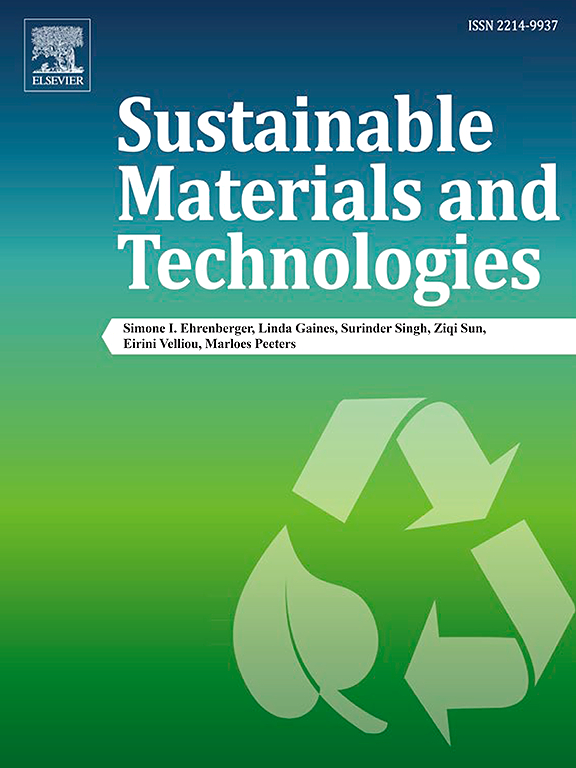The role of surface interventions in bio-welding mycelium based-composites
IF 8.6
2区 工程技术
Q1 ENERGY & FUELS
引用次数: 0
Abstract
The use of mycelium-based composites in large-scale bio-fabrication is limited due to the biomatter's low mechanical strength and the requirement for external reinforcement or permanent moulds holding the material in place. Utilising bio-adhesion in the fabrication process of mycelium-based composites may offer the potential to upscale the production of fungal biomatter and further expand its range of applications. However, studies on the effects of bio-welding on the properties and performance of mycelium composites are limited.
This is the first paper investigating the use of different bio-welding interventions to bind mycelium-based composites and studying the impact of these interventions on the material's properties and performance through environmental readings, physical and chemical analysis and mechanical testing. Ganoderma lucidum grain spawn was used with hemp shivs to bio-fabricate mycelium composites. The surfaces of these composites were then subjected to environmental, nutritional, and abrasive interventions for five consecutive days before binding, and monitored during different stages of the bio-welding process. The temperature, relative humidity, and CO2 of the mycelium-based composites were recorded during the five-day intervention phase. A chemical analysis was undertaken at the wet and dry stages of the composite samples. Furthermore, the final (dried) bio-welded components underwent mechanical testing (flexural, compressive, and tensile strength) for performance evaluation. This study found that surface interventions could affect and enhance the mechanical properties of bio-welded mycelium composites. The research demonstrated that adding nutrients to surfaces before binding significantly affected compressive, tensile, and flexural strength. Using interventions in the bio-welding process presented new opportunities for upscaling the production of mycelium-based composites and the potential to fine-tune their mechanical properties, adapting them for different applications.
求助全文
约1分钟内获得全文
求助全文
来源期刊

Sustainable Materials and Technologies
Energy-Renewable Energy, Sustainability and the Environment
CiteScore
13.40
自引率
4.20%
发文量
158
审稿时长
45 days
期刊介绍:
Sustainable Materials and Technologies (SM&T), an international, cross-disciplinary, fully open access journal published by Elsevier, focuses on original full-length research articles and reviews. It covers applied or fundamental science of nano-, micro-, meso-, and macro-scale aspects of materials and technologies for sustainable development. SM&T gives special attention to contributions that bridge the knowledge gap between materials and system designs.
 求助内容:
求助内容: 应助结果提醒方式:
应助结果提醒方式:


